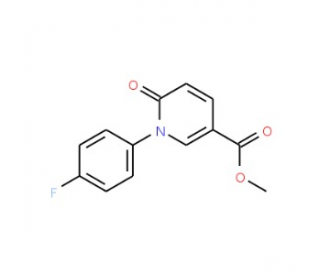详细说明
- Purity>95%, by SDS-PAGE under reducing conditions and visualized by Colloidal Coomassie® Blue stain
- ActivityRecombinant Human His6-USP7 is a Ubiquitin-specific deconjugating enzyme. Reaction conditions will need to be optimized for each specific application. We recommend an initial Recombinant Human His6-USP7 concentration of 1-5 nM.
- SourceSpodoptera frugiperda, Sf 21 (baculovirus)-derived Contains an N-terminal 6-His tag
- Accession #
- Predicted Molecular Mass129 kDa
| E-519 | | |
| Formulation X mg/ml (X µM) in 50 mM HEPES pH 7.5, 100 mM NaCl, 1 mM TCEP | ||
| Shipping The product is shipped with dry ice or equivalent. Upon receipt, store it immediately at the temperature recommended below. | ||
| Stability & Storage: Use a manual defrost freezer and avoid repeated freeze-thaw cycles.
|
Ubiquitin Specific Peptidase 7 (USP7), also known as Herpes Virus-associated Ubiquitin Specific Protease (HAUSP), is a widely expressed deubiquitinating enzyme belonging to the peptidase C19 family (1). It has a predicted molecular weight of 130 kDa (2). Human USP7 is 1102 amino acids (aa) in length and shares 99% aa sequence identity with the mouse and rat orthologs (2,3). USP7 consists of a cysteine peptidase core (aa 208-560) that is flanked by an N-terminal TRAF-like domain (aa 50-205) and two C-terminal protease-resistant domains (aa 622-801 and 885-1061) (2,3). USP7 can be phosphorylated at Ser18 and Ser963 and ubiquitinated at Lys869 (2,4). USP7 was initially identified as a p53-interacting protein that deubiquitinates p53, thereby stabilizing the protein and inducing p53-dependent cell growth arrest and apoptosis (5). USP7 also targets the p53 regulatory proteins MDM2, MDMX, and Daxx, the epigenetic regulator Histone 2B, and the transcription factor FoxO4 (4,6-10). Additionally, USP7 interacts with the HSV-1 immediate early protein ICP0, contributing to the stabilization and transactivation capability of ICP0 during HSV-1 infection (1,11,12).
- References:
- Everett, R.D. et al. (1997) EMBO J. 16:1519.
- Fernández-Montalván, A. et al. (2007) FEBS J. 274:4256.
- Holowaty, M.N. et al. (2003) J. Biol. Chem. 278:47753.
- Khoronenkova, S.V. et al. (2012) Mol. Cell 45:801.
- Li, M. et al. (2002) Nature 416:648.
- Brooks, C.L. & W. Gu (2004) Cell Cycle 3:895.
- Meulmeester, E. et al. (2005) Cell Cycle 4:1166.
- Tanga, J. et al. (2010) Biochem. Biophys. Res. Commun. 393:542.
- van der Knaap, J.A. et al. (2005) Mol. Cell 17:695.
- van der Horst, A. et al. (2006) Nat. Cell Biol. 8:1043.
- Everett, R.D. et al. (1999) J. Virol. 73:417.
- Boutell, C. et al. (2005) J. Virol. 79:12342.
- Long Name:Ubiquitin Specific Protease 7
- Entrez Gene IDs:7874 (Human); 252870 (Mouse); 360471 (Rat)
- Alternate Names:Deubiquitinating enzyme 7; EC 3.1.2.15; EC 3.4.19.12; HAUSP; HAUSPTEF1; Herpes virus-associated ubiquitin-specific protease; Herpesvirus-associated ubiquitin-specific protease; TEF1; ubiquitin carboxyl-terminal hydrolase 7; ubiquitin specific peptidase 7 (herpes virus-associated); ubiquitin specific protease 7 (herpes virus-associated); Ubiquitin thioesterase 7; Ubiquitin-specific-processing protease 7; USP7












